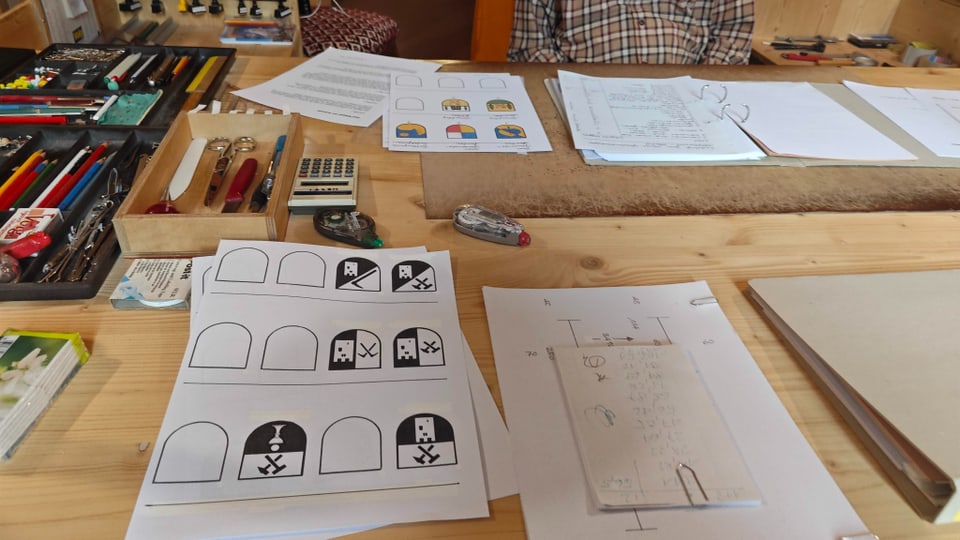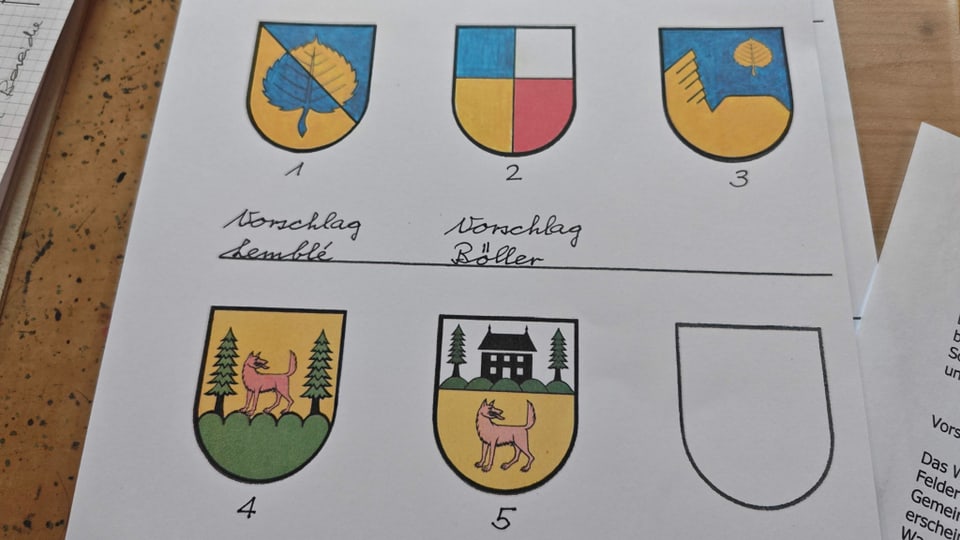Contents
A new coat of arms should reflect the community’s identity. Not everyone adheres to the rules of heraldry.
It is an identifying feature: the coat of arms. Every municipality, every canton and every country has one. Most coats of arms have existed for decades or centuries and are rooted in the history of the respective location. The coats of arms are rarely changed. For example, when two communities merge. Just like the communities of Wölflinswil and Oberhof in Fricktal, Aargau.
Legend:
The residents of Oberhof and Wölflinswil can choose from these five suggestions. For example, at the top left there is a linden leaf that is typical of the Fricktal. Gold is the municipal color of Wölflinswil, blue that of Oberhof.
SRF/Alex Moser
As luck would have it, one of these two fusion communities, Oberhof, has a coat of arms expert at home. Markus Reto Hefti is the former president of the Swiss Heraldic Society. As a heraldist, he has been involved in the study of coats of arms for decades and provided ideas for the new coat of arms of the merger community. He sat at his desk for several hundred hours and worked out 147 suggestions.

Legend:
This is where the coats of arms of Markus Reto Hefti were created. Every line, every angle and every color combination has to be right.
SRF/Alex Moser
Suggestions were also received from the public. Many people wanted to combine the two current municipal coats of arms, i.e. the wolf of Wölflinswil with the house and the fir trees from the Oberhof coat of arms. Two of these suggestions are now on the shortlist. Markus Reto Hefti is not happy about that at all. “The combination makes the coat of arms appear overloaded and is not easily visible from a distance.” A heraldist would never design a coat of arms like that, says Hefti.
The Aargau coat of arms is incorrect from a heraldic perspective.
But there is more to consider in heraldry. Only certain colors are allowed: There are metals (gold/yellow, silver/white) and colors (red, blue, green, black). The main aim is to create a strong contrast between the individual elements of the coat of arms. That’s why it’s not allowed for paint to meet paint or metal to metal. But not everyone sticks to that. The canton of Aargau, for example, has clearly broken the rules from a heraldry perspective: with black and blue, two colors are right next to each other. Hefti thinks that’s very clumsy. The contrast is not sufficiently pronounced.
Mistakes in the rules and examples of historical coats of arms
There is also a color error in the coat of arms of Münchwilen (AG). The monk pictured is wearing a brown habit. Brown on a coat of arms is difficult for heraldists to see, says Hefti. The canton spoke to the community about the faux pas. But Münchwilen insisted on the brown color of the monk’s habit.
Incidentally, the heraldic rules are not legally enforceable. Only the so-called blazon, the description of the coat of arms, is binding. For the Aargau coat of arms, for example, the blazon reads: A silver wave crest split in black on the right, three five-pointed silver (white) stars in blue on the left. When it comes to the actual graphics, however, the designer is allowed to act freely as long as the blazon is adhered to.
It has not yet been decided which coat of arms the merged community of Wölflinswil/Oberhof will have. There are five subjects to choose from. The name is not yet clear either. Benkental, Wolfhof, Oberhof-Wölflinswil and Wölflinswil-Oberhof would be possible.
